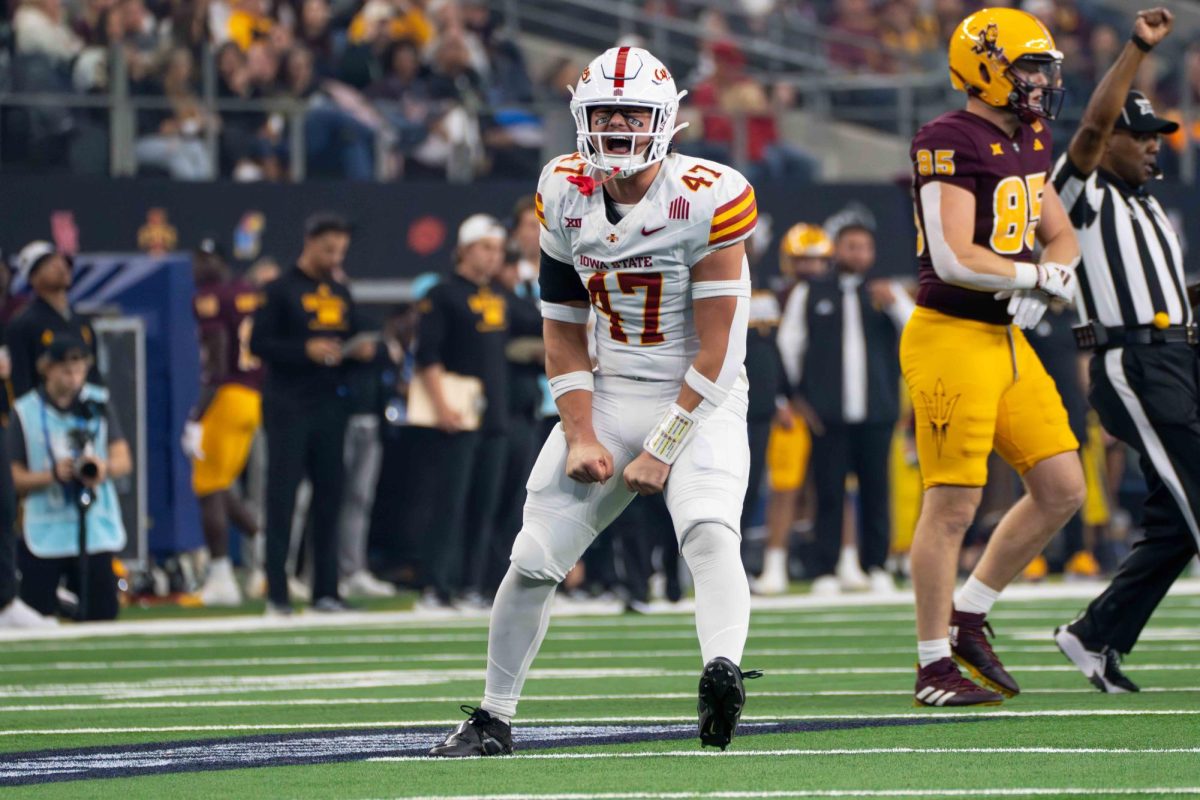Barbers foresee last clip
April 1, 1999
The days of nostalgic barbershops buzzing with the sounds of electric razors and spirited conversations may be numbered, according to some Ames barbers.
Tom Peter, owner of Tom’s Barber Shop, 415 Main St., has been giving haircuts on Main Street for nearly 31 years.
Peter could be best described as a traditional barber, and as he trimmed up one of his patron’s hair a few weeks ago, he discussed why small shops like his might die out.
He recalled a time when there were 12 operating barber chairs on Main Street, and he says now there are probably fewer than 12 chairs in Ames.
A look of disappointment sprouts on his face as he discusses why men aren’t becoming barbers at the same clip that they used to.
“I do see the end of the male-operated barbershop as we know it today,” he said, over the whir of an electric razor.
Peter said he sees the era of a haircut and straight-razor shave coming to a close within 15 years, as more men frequent cosmetologists and hairstylists.
“The word ‘barber’ occurs only on licenses and barbershop windows, and that’s about it,” Peter said.
Peter cited a lack of interest in barbering among males as the major reason the number has dramatically declined.
“A young male barber is 50,” he said. Peter is a “young” 53.
According to the Iowa Department of Health, there are 1,473 practicing barbers at 801 barbershops in Iowa compared to the 14,419 active cosmetologists at 4,077 salons across the state.
Last year, only 44 new barbers were licensed.
Ray Barker, member of the Iowa Board of Barber examiners, remembers a time when there was at least one barbershop in every county seat in Iowa. Now, he says, that’s no longer the case.
Barker roughly estimated that the number of Iowa barbers has decreased by 2,500 to 3,000 since the ’50s.
He said the trend began when men started wearing their hair longer in the ’60s and ’70s.
“Basically, it started when men’s hair fashions were longer,” he said. “Consequently, the barbers at that time didn’t want to cut longer hair” because they were used to giving “shorter, military-type cuts.”
One reason Barker cited for men not visiting cosmetologists before the early ’70s is because women, by law, were prohibited from cutting the hair of men over the age of 16, Barker said.
Barker said cosmetologists “won the right to cut men’s hair” when the law was reversed in the early ’70s.
Though generally considered a field dominated by males, some women are becoming barbers.
At the American College of Hairstyling in Des Moines, one of the four remaining schools in Iowa that teach barbering, 50 percent of those enrolled are female.
From 1899 to 1972 the college was known as The Iowa Barber College. But the moniker was changed because the new generation of barbers didn’t want to be known for simply trimming hair, said Terry Millis, president of the college.
“[New barbers] say it would be more accurate to call themselves ‘hairstylists,'” he said.
Millis gave two reasons why old-fashioned shops might cease to exist in the future.
First, he said most barber school graduates don’t want to work in a small town because they don’t want to give up the “city lights” and higher wages of Des Moines and other large cities.
He said it may be difficult for elderly barbers in small towns to find a person to run their shops after they retire.
“The problem has been getting young graduates to look at smaller towns,” he said.
The other reason Millis gave for the number of rustic shops waning is because new barber graduates are more skilled than their veteran counterparts.
Whereas Peter and Brown are licensed to cut hair and shave their clients, the younger barbers can cut and color hair, shave, administer permanents and do nails among other services.
Monty Brown, owner of Monty’s Barber Shop, 2801 West Street, said his small shop may mark the end of an era in Ames where it’s all right to let your hair down.
“This [shop] may be the last one to die in Ames,” he said.
But many men won’t hold out for salons.
Troy Devens, a senior at Ames High School, has had Peter cut his hair since he was seven for two simple reasons — the nostalgia associated with old-time barbershops and the quality of the haircuts.
“I like the atmosphere,” he said. “I’m not too big of a fan of stylists.”
He said he likes to be in the thick of conversation with men his grandfather’s age, trying to top each other with their hunting and fishing stories.
Devens said he doesn’t want old barbershops to die out because he hasn’t a clue where he’ll go to get his hair cut.
“I’ll probably end up being one of those guys,” he said, referring to the storytelling bunch.
Jim Roach, a postman, splits his time between two Main Street barbers who are on his route.
Stability is the word that readily comes to his mind when he describes barbershops. He doesn’t see them dying out as long as there’s a market.
“There’s too many people who will never succumb to the mass marketing approach to hair cutting,” he said.
His favorite aspect of Peter’s shop is the “masculine atmosphere as opposed to the unisex thing” common in salons.
Peter said many men like barbershops because of the “freedom of expression” that comes along with not assuming politically correct speech.
“You don’t have to be politically correct to be in a barbershop,” Peter said.
Patrons also like the consistency.
“They know what they’re going to get, and they’ll get it that way every time,” he said.
Across town, Brown trims one of his customer’s necks with great swiftness and delicacy as the rest of his patrons sit quietly in the seven chairs lining the walls.
Brown, 49, has been barbering in Ames for 22 years.
Though there are relatively fewer barbers now, Brown says the lone-chair cutters are doing a good business.
“The barber’s business is the best it’s ever been,” Peter said.






